Takamine 12-String Setup - Requinto-Style
Takamine 12-String Setup - Requinto-Style
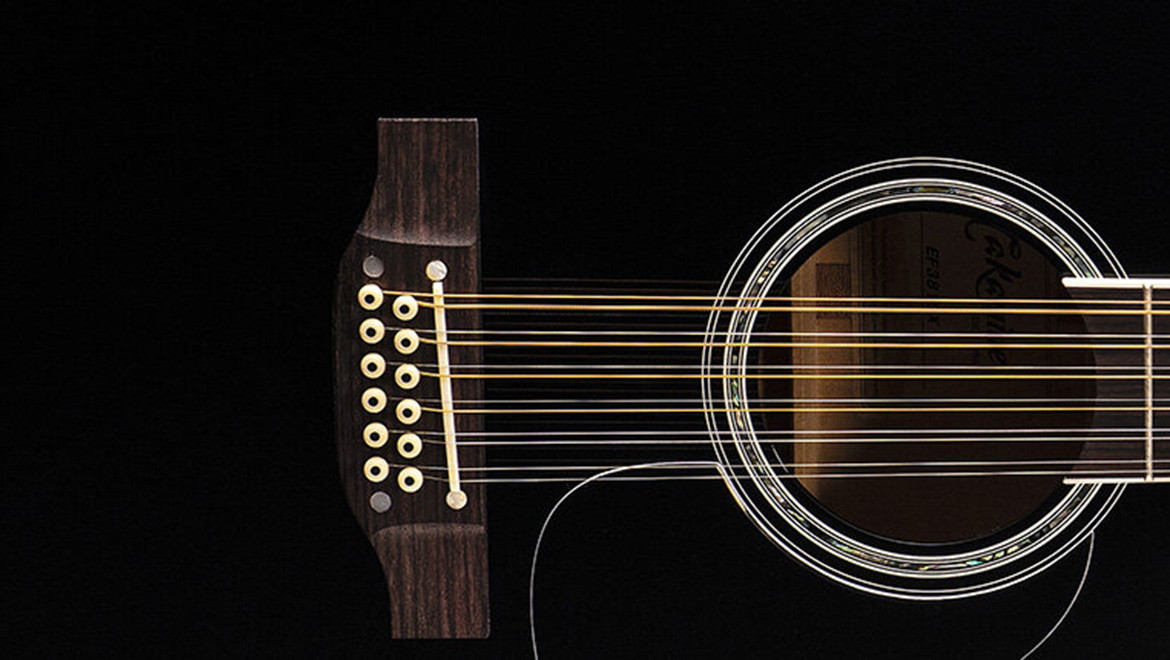
Takamine has always made excellent 12-string guitars, widely used on some of the most famous 12-string songs in pop culture... "Hotel California" by Southern California's Eagles is an example of a famous Takamine 12-string track. You can hear Takamine 12-strings on many of the most well-known acoustic-based pop, rock, and country songs of the past 40+ years.
In recent years, there has been a renaissance of 12-string guitar in Regional Mexican music. Norteño music, especially the Sierreño variety, has made the 12-string guitar a chief melodic component. This great music is popular all over California and the Southwestern US, and Takamine 12-strings are the gold standard for players in this style. However, the way 12-string guitars are typically set up for these music styles are different than standard 12-strings for other genres, and we want to make sure you know how to do it without inadvertently damaging your guitar.
In a traditional 12-string setup, the courses (dual sets of strings that are played together) are an octave apart from each other on the lowest four strings (E, A, D, and G) and in unison only on the top two (B and E). But for Regional Mexican styles, players prefer to have all of the strings set up in courses of two identical unison pitches, as opposed to the traditional octave courses. They do this by simply using two identical 6-string sets. This gives the player a sound with more growl in the low notes, while still retaining the natural "chorusing" of the dual string sound.
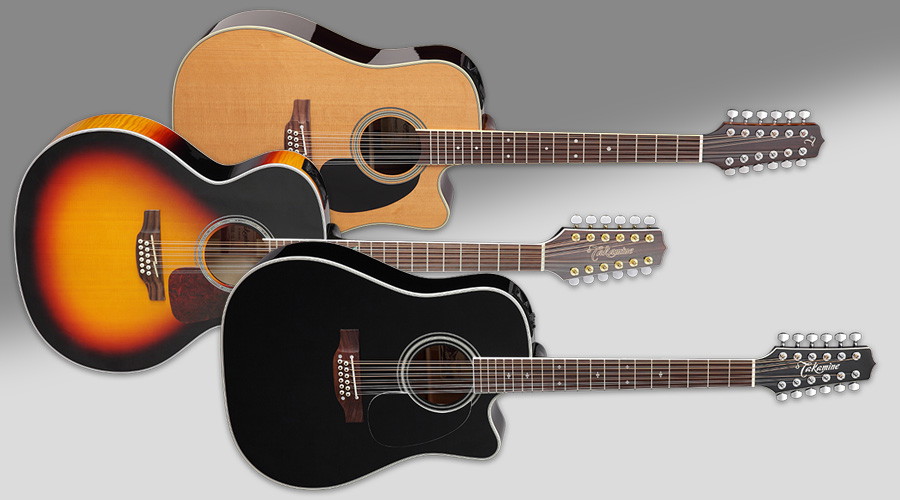
A few of Takamine's most popular and acclaimed 12-string models (top to bottom): EF400SC TT, GJ72CE-12, and one of the best-selling 12-string guitars of all time, the EF381SC.
All About Strings (and String Tension)
Takamine 12-strings leave the factory set up to accept D'Addario light gauge phosphor bronze sets (.010-.047). All guitars are built to withstand a certain amount of string tension on the neck. With the standard string gauges in the factory setup, the set exerts 250.86 pounds of force on the neck, which it can handle with no problem. However, if you try putting on two sets of phosphor bronze 6-string sets (.012-.053), then the tension on the neck would be a huge difference: 321.08 pounds at standard tuning! That's 28% percent more tension... ow, my aching neck and bridge!
Unless you are tuning down the guitar a whole step, this is just not a good way to treat your guitar. You would most likely cause problems that could severely, and possibly permanently, damage the guitar. It is also not a good idea to install a device that reinforces the bridge from the inside of the guitar. While keeping the bridge on the top of the guitar, this can put a lot of stress on the neck and the truss rod... and it will void your warranty. If you are tuning to standard pitch, it is a much better idea to go with two extra-light six string sets (.010-.047) which would result in 266.5 pounds of tension... only a six percent difference.
Other String Choices
If you don't use D'Addario strings, here are some more six-string sets from other manufacturers and their combined tension using two sets:
• GHS Ultra Light Phosphor Bronze (.010-.046): 232.6 pounds
• GHS Extra Light Thin-Core (.011-.046): 243.6 pounds
• Elixir Extra Light Phosphor Bronze Nanoweb (.010-.047): 270 pounds
These sets are all within a safe margin, and you may find others that also won't cause damage to your guitar. If you use other strings, check with the manufacturer to find out what the set's tension is. Then double that, and stay as close as you can to the tension the guitar was designed for. Keep it under 10 percent extra.
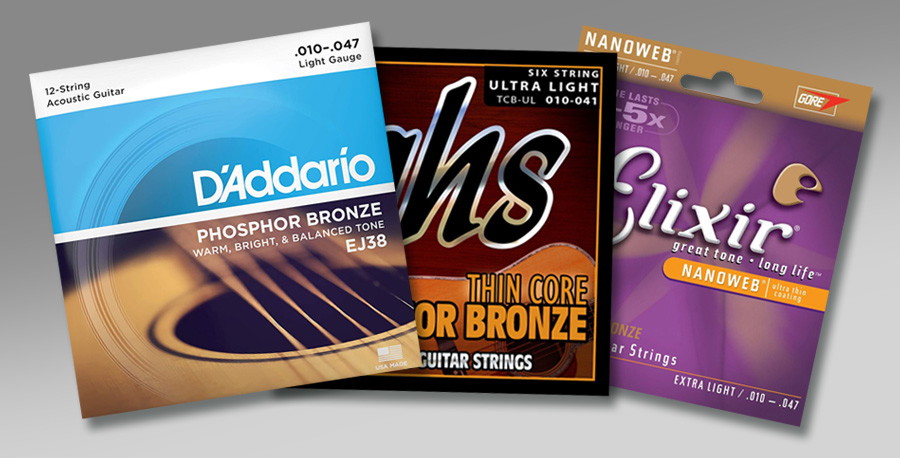
The standard 12-string D'Addario set on the left, along with a couple of possible replacement sets for Regional Mexican style setup. Keep in mind that you will have to get two 6-string sets to string a 12-string guitar.
Take It to a Tech
Lastly, to properly set up your Takamine for Regional Mexican style, you also need to take the guitar to a qualified luthier or guitar tech, and have them file the nut of the guitar to accommodate the thicker string gauges. Below are some photos of this procedure. After the nut has been modified and the guitar has been brought up to pitch, the luthier can give the truss rod an adjustment to accommodate the new tension, and you're ready to go!
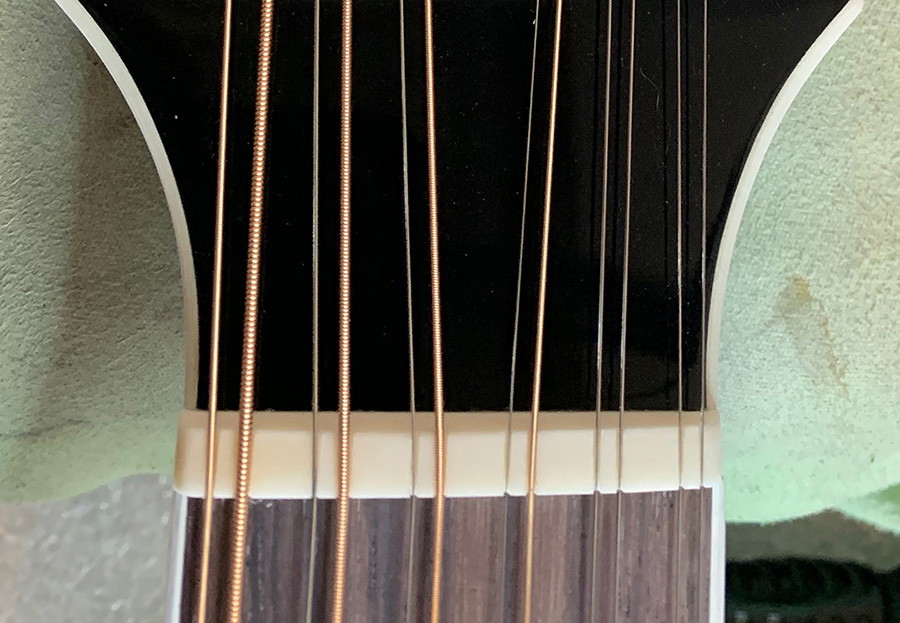
Before the nut is worked on, note that it is set up to accommodate the alternating high-octave and low-octave string courses.
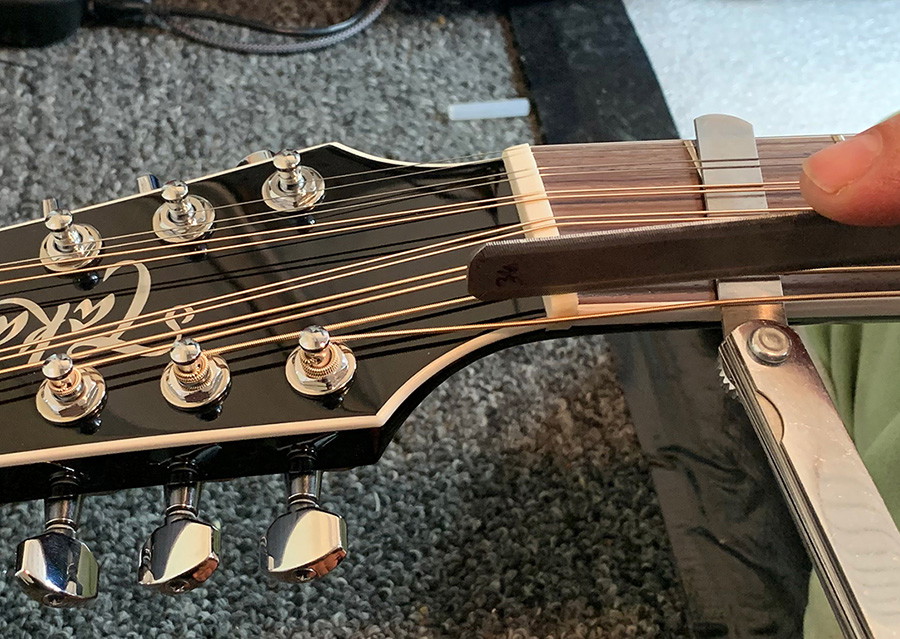
During the procedure, a qualified guitar luthier files the nut to the width needed for the wider strings used in unison courses.
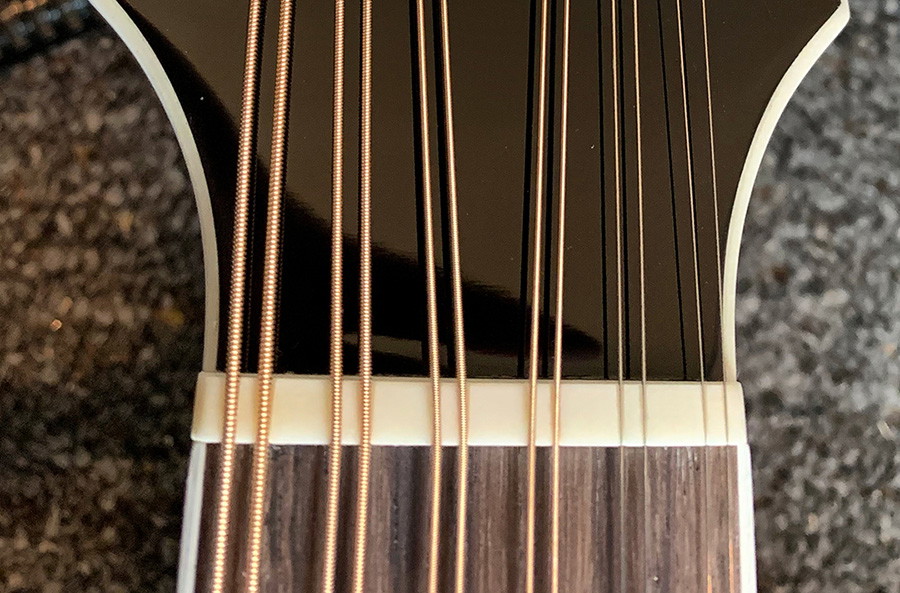
After the procedure, you can see how the nut's string slots are now wider, and it has been restrung with two extra/ultra light gauge six-string sets for Regional Mexican styles.




